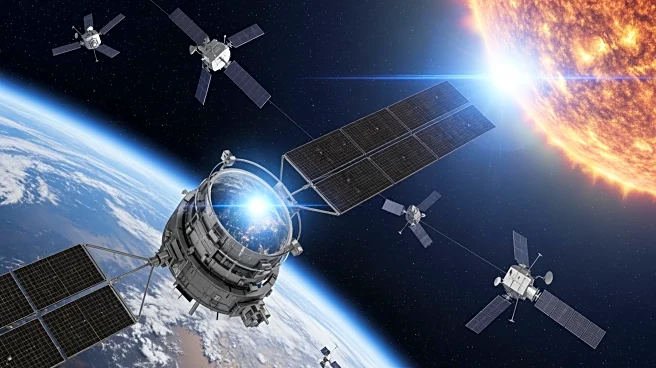What's Happening?
On November 4, 2025, the sun emitted two significant X-class solar flares within a span of less than 12 hours, leading to radio blackouts across the sunlit portions of Earth. The first flare, classified
as X1.8, originated from sunspot AR4274 and peaked at 12:34 p.m. EST, causing a strong R3 radio blackout across North and South America. The second flare, an X1.1-class, erupted at 5:02 p.m. EST from a region beyond the sun's southeastern limb, resulting in another blackout affecting the North Pacific Ocean, New Zealand, and parts of eastern Australia. These flares were accompanied by coronal mass ejections (CMEs), although initial models suggest they are not Earth-directed. However, the outer edges of these CMEs might interact with solar wind streams, potentially sparking geomagnetic storms later in the week.
Why It's Important?
The occurrence of X-class solar flares is significant due to their potential to disrupt communications and navigation systems on Earth. The recent flares caused radio blackouts, which can impact aviation and maritime operations reliant on high-frequency radio communications. Additionally, the possibility of geomagnetic storms resulting from these flares could lead to vibrant aurora displays, affecting power grids and satellite operations. The increased solar activity highlights the need for ongoing monitoring and preparedness for potential disruptions in technology and infrastructure.
What's Next?
Sunspot AR4274 remains active and is turning to face Earth, increasing the likelihood of future Earth-directed eruptions. NOAA forecasts a 65% chance of additional M-class flares and a 15% chance of X-class flares in the coming days. The recent M7.4-class flare from AR4274, accompanied by a partial-halo CME, is under analysis to determine any Earth-directed threat. Stakeholders in aviation, maritime, and satellite communications are advised to stay alert for further updates and potential geomagnetic responses.
Beyond the Headlines
The increased solar activity underscores the importance of space weather forecasting and its implications for global communications and infrastructure. As solar cycles progress, understanding and mitigating the effects of solar flares and geomagnetic storms become crucial for maintaining technological resilience. The event also highlights the interconnectedness of space phenomena and terrestrial systems, prompting advancements in predictive models and international collaboration in space weather monitoring.











